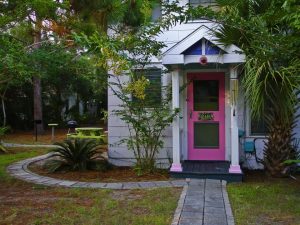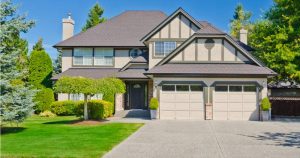Independent living is often cited as being good for one’s well-being, so it’s no surprise that aging in place has become so popular. Thankfully, many options in today’s housing market make it possible.
Preparing for physical safety and financial security are the most immediate concerns that come to mind as we plan for aging in place. However, convenience and overall well-being should also be considered before deciding where to settle in.
Here are three housing options to weigh as you or your loved ones plan for continued independence.
1. Renovate Your Current Home
Adding front entry ramps, bath bars, sit-in tubs and other safety features may make it physically possible to stay where you are. However, renovation costs can add up quickly, especially if they’re needed all at once.
Home maintenance should also be factored in. Who will manage the upkeep if the property has multiple floors or a large yard?
2. Right-Size to a Manageable Floor Plan
Some may find it easier to purchase a home with barrier-free, universal design rather than deal with the stress of home renovations. Moving closer to family and friends can also help to prevent social isolation or depression.
3. Buy a New Home With Family Members
Floor plans for multigenerational homes are often designed with individual privacy in mind while allowing family to be nearby. Sharing home maintenance costs also minimizes living expenses. And this is an excellent way to help family members enter into homeownership.
Aging in place requires thoughtful preparation. Get in touch today for a referral to a trusted financial adviser to begin this journey. You can also reach out if you’re interested in learning about your home’s value or finding a new property.
Archive for October, 2018
Home OwnerShip in Your Golden Years!
Tuesday, October 30th, 2018Home Buying When You Have Student Debt
Wednesday, October 24th, 2018Did you know you can buy your dream home while paying off student loan debt?
It’s true and even quite common. While student loans are factored into your debt-to-income ratio, they shouldn’t prevent you from becoming a homeowner.
And fortunately, there are many programs and options available to prospective buyers, some you may not be familiar with. Here are four ways people with student loans achieve their homeownership goals:
1. Co-buying With Friends or Family
Purchasing a home with a roommate, significant other or sibling allows you to combine multiple incomes to qualify for a better mortgage rate. This can help lower your monthly payment and make home maintenance more affordable.
2. Receiving Financial Gifts From Family
You can also accept gift money from your parents, grandparents or other family members to put toward your home purchase. Some loan programs have a cap on how much gift money can be used, so make sure you know the limits first.
3. Choosing Low (or No) Down Payment Loans
There are many low down payment options, including FHA, HomeReady and Home Possible loans. For loans with no down payment, VA loans may be available to veterans and military members as well as USDA loans for those purchasing in rural areas.
4. Using Assistance Programs
Down payment assistance programs can cover some or all of your down payment costs if you qualify. These programs vary by location, so talk with a lender to learn about potential options.
Working on your credit can also help you buy a home. Pay your credit card bills on time every month, aim to pay down your debts and never let an account go into collections. It also helps to get preapproved for a mortgage so you know how much you qualify for.
If you’re ready to make homeownership a reality or would like a referral to a trusted lender, get in touch today.
Need Extra Living Space? The Pros and Cons of building in your back yard.
Tuesday, October 16th, 2018Designed for one or two persons, a granny flat is a self-contained living area usually located on the grounds of a single-family home. A granny flat can be detached, or it can be attached to the other dwelling. It is sometimes called a granny flat because it is a popular way for families to accommodate aging parents.
In the building industry, the granny flat is most often known as an accessory apartment or accessory dwelling unit (ADU). Other terms include granny pod, mother-in-law unit, in-law apartment, bonus unit, casita, carriage unit and ohana unit (primarily in Hawaii).
Many granny flats fall into the tiny house category, and the surge in interest in tiny house living has been a boon to grandparents who are interested in this type of housing.
Granny flats/tiny houses may be used for nannies or for young adult members of the family. They are sometimes used as rental units, but zoning laws and deed restrictions sometimes ban renting.
As multigenerational housing becomes more accepted, granny flats are likely to become more prevalent. Realtors and builders report that they are already a good selling point.
Amenities in a Granny Flat
Some granny flats are miniature versions of full-sized housing units, with complete kitchens. In others, kitchen facilities are limited, perhaps to a mini fridge and microwave, which involve fewer safety issues than full kitchens.
The Granny Pod
The newest wrinkle in the granny flat business is popularly called a granny pod. It offers high-tech monitoring capabilities so that the inhabitant can be checked on via remote access. Other devices include a timed medication dispenser. The amenities that can be installed include a toilet that checks temperature and does simple urinalysis.
Difficulty of Adding a Granny Flat
Barriers to the growth of granny flats include municipal statutes, zoning laws, building restrictions, neighborhood covenants, and other regulations. In many cases, homeowners simply ignore or circumvent such regulations, which is relatively easy to do when converting a garage or other existing structure — less easy when building a new structure.
New construction is more expensive as well, and homeowners may find it difficult to get financing. Connecting utilities can also be expensive. Some municipalities require that driveways and/or off-street parking be provided for the granny flat occupant, and that can add expense, or be completely unfeasible for certain properties.
The growth of the prefabricated or modular building industry has made it easier for some homeowners to add a granny flat, but this type of structure may be prohibited in some localities.
Advantages of Adding a Granny Flat
Besides providing living space, the granny flat offers other advantages. There is greater security with another tenant on the property, especially if the apartment is oriented toward the side or back of the lot. Tenants can sometimes share transportation and other amenities with the occupants of the main house. Sometimes they may be able to share childcare, lawn care, and other maintenance tasks.
Advantages and Disadvantages for Grandparents
Research shows that senior citizens do best when they have an abundance of social contacts, and living near a younger family makes that more likely. Having family members nearby to monitor the health and well-being of an older person is an advantage. For grandparents, the proximity of grandchildren usually tops the list of advantages. Since granny flats are a form of multigenerational housing, all those involved must be careful to observe boundaries. In addition, financial arrangements should be carefully worked out to avoid family disputes over money.
Some grandparents may feel that moving to an accessory apartment involves a loss of independence and privacy. Possibly these individuals should consider living in a retirement community or sharing housing with other adults instead.
Your Checklist of Crucial Home to Do’s
Tuesday, October 9th, 2018Cleaning the gutters and weeding the garden are tasks that come with regular, visible reminders. But how do you keep up with other necessary maintenance that might not be as noticeable?
Here are some essential home maintenance tasks that are often overlooked.
Appliances: If you want your fridge, dryer and other appliances to last you for the long haul with fewer repair calls, they need regular care and tuneups:
Change and clean the refrigerator drip pan
Wash your dryer lint screen
Clean the condenser coils on your refrigerator
Change the water filter on your ice maker
HVAC Systems: Your heating, cooling and ventilation systems need consistent upkeep for better performance, which can help keep your energy bills lower throughout the year:
Clean the ducts and vents
Clean or change your AC filters
Replace worn weather stripping to help keep cool air in
Test your thermostat to ensure it’s sending a signal
Plumbing: Snaking the drain for a few hair clogs isn’t enough to keep your plumbing system in working order. Be sure to also take care of these things:
Flush the water heater
Check your pipes for leaks
Test the water pressure on your sprinkler system
Check water levels on boilers
Safety Systems: To ensure your loved ones and belongings are safe in the home, do the following:
Replace the batteries in your smoke detectors
Test your smoke and carbon monoxide detectors
Test your security alarms and codes
Inspect your fence or gate for holes or vulnerabilities
Keep this checklist handy and run through it every few months to keep your home in top condition and your loved ones safe. Get in touch today if you’d like to talk about other ways you can help safeguard your investment.
Five Ways Contingencies Can Protect You
Tuesday, October 2nd, 2018Purchasing a home is one of the largest financial commitments you’ll ever make, and it’s understandable to want to protect your investment throughout the purchase process. When you’re ready to make an offer on a home, adding a contingency to your contract can give you time to assess the property and feel confident that it is a sound investment.
Here are five contingencies that can safeguard your investment:
1. A financing contingency ensures you’re not on the hook if something goes awry with your loan. If you’re unable to secure a mortgage or the terms and conditions change significantly during the contingency period, you can back out without any penalties.
2. An inspection contingency gives you a set time frame to have a professional home inspection done on the property. Should issues be found, you can negotiate with the seller to make repairs or adjust the sales price to account for the home’s condition.
3. An appraisal contingency protects you if an appraisal comes in below the sales price. When this happens, it’s up to you to make up the difference, either by securing additional financing, paying it out of pocket or renegotiating the deal. If none of these methods work, the contingency allows you to back out without losing your earnest money.
4. A home sale contingency is crucial if you’re selling an existing home while buying a new one. Essentially, it says your purchase relies on your ability to sell your current home by a specific date. If you haven’t accepted an offer in that period, you can withdraw and get your earnest money back.
5. An occupancy contingency protects you should you need to move into your new home by a specific time. It gives you possession of the home on the date you specify.
It’s no secret that today’s housing market is a competitive one, and bidding wars can be intimidating. Get in touch today to ensure that your bid stands out and your investment is protected.




